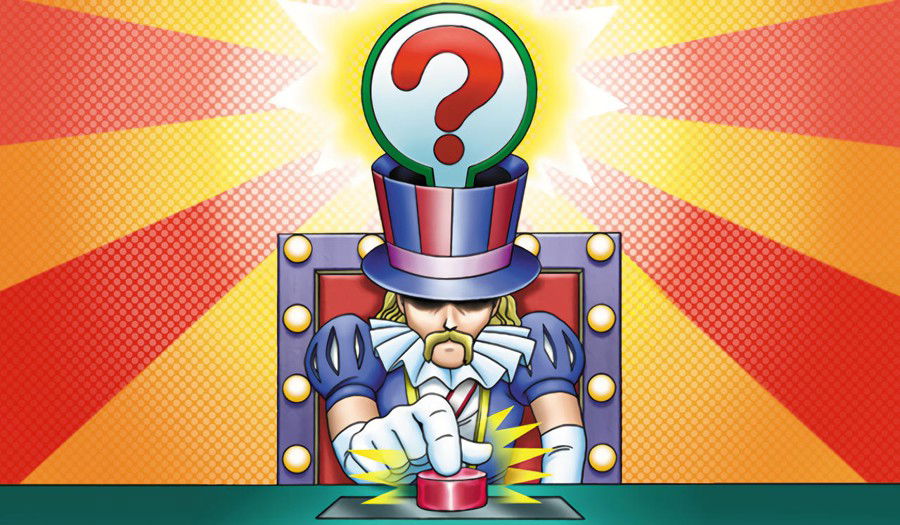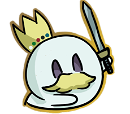What is a Side Deck and How Does It Work
A Yu-Gi-Oh!TCG Side Deck includes up to 15 cards, and is different from your Main Deck and your Extra Deck. You'll use a side deck in "best of 3" matches to change cards in your main deck and/or extra deck.

A side deck lets you adapt your strategy to deal with your opponent's deck, be it to fix a clear disadvantage or even make a favorable matchup even better.
For instance, if your deck struggles against traps, after you lose your first match, you can use your side deck to add backrow removals, such as Cosmic Cyclone or Twin Twisters. You can just remove any cards that are useless to that particular matchup and add better ones.
Please note that, after you swap these cards, your main deck, extra deck, and side deck need to have the same number of cards as they had before. This means that, if you remove 2 cards from your main deck, you need to put exactly 2 cards from your side deck in their place. And, at the end of the duel, you must change all three decks back to their original versions.
To sum up, your side deck is a list of strategically handpicked "backup cards" to compete in Yu-Gi-Oh!TCG tournaments.
Why is a Side Deck Essential in Competitive Settings?
Yu-Gi-Oh!TCG duels are often "best of 3s", that is, you and your opponent play two or three matches in a row (until one of you wins twice). This is what makes your side deck essential, as, after game 1, you'll be able to adjust your main deck to try to beat your opponent's strategy. The main idea is to swap less efficient cards for the cards in your side deck to turn a difficult matchup into a winnable one, or make a favorable matchup even better.
Even the best deck in the format, as consistent and resilient as it typically is, has one or more unfavorable matchups. Either because of specific interactions that make it harder to play, or because the enemy deck is centered around a mechanic that is naturally strong against that particular strategy. Your side deck exists to deal with these situations.
Imagine you're playing link-summons, and you're up against a Floowandereeze. Because of Floowandereeze & Empen's continuous effect, your opponent's deck has a natural advantage over yours. In this case, using the cards in your side deck to adapt your strategy to this matchup is essential if you want to win.
Another important detail is that, to use your side deck correctly, you must first know what the meta is. This means you must know which cards in your own deck are less efficient in each particular matchup. You need to know more than just which cards to add and remove: you need to understand why you are removing and adding those cards.
So, your side deck is more than just a simple complement. It is an extension of your strategy, and, when used correctly, can be the difference between winning and losing a tournament.
Types of Cards You'll Often Find in Side Decks
Your particular side deck will change according to your main strategy and the current meta, but a few types of cards often show up in side decks regardless of all the other factors.
Situational Handtraps

Board Breakers

Trap/Spell Removals

Floodgates

Counter Traps

Others
Besides the cards above, you may also find in side decks: anti-handtrap cards, support engines that only work when you go first or go second, cards in your archetype that only work when you go first (such as a few traps), garnets for tech cards that need you to target something in your deck, and burn cards - to win matches that go to time.
Your Side Deck in Practice: How and When to Swap Your Cards
Building your side deck is just 50% of the challenge. The other half is knowing when and how to use it during your duels because you'll have to know your scene, your meta, and practice a lot.
You can use your side deck in two instances - between game 1 and game 2, and once again between game 2 and game 3, if necessary. In these moments, you need to think fast and see which cards in your main deck worked, which didn't, and which cards in your side deck can improve your chances of winning the next game.
A good side deck isn't just "a bunch of powerful cards". You need to know what each card does, and what you're removing from your deck to add it.
Let's assume you're facing Maliss, a deck that relies a lot on effects that banish their own monsters to special summon them immediately after. In this case, if you're playing Droll & Lock Bird in your main deck, you must have noticed during game 1 that this card doesn't really work in this matchup, as your opponent can play their combo by adding a card from their deck to their hand. As such, you're better off swapping your "Drolls" for copies of Artifact Lancea, which practically destroys Maliss because it doesn't let them banish any cards.
Going First
When you lose a match and decide to go first in the next one, your priority is usually building a strong board and protecting it.
So, a good idea is to add to your side deck cards that make your "going first" strategy better, such as counter traps, floodgates, and even anti-handtrap cards.
The reasoning behind this is simple: you need to make sure your board is solid to prevent your opponent from playing their main strategy. Your side deck needs to be able to do this.
Going Second
When you win a match and you know your opponent will go first in the next one, your priority is to disrupt your opponent's strategy so you can buy time to play your own strategy.
You can use handtraps to prevent your opponent from playing their combo, board breakers to deal with the board they build, or even a mix of these two strategies.
Because current decks are very resilient and powerful, knowing how to use your side deck when you go second is critical. Against the best decks, you'll have to do more than just add good cards: they need to work against the decks you're facing in particular.
Side Decks of Popular Decks Right Now
Ryzeal Mitsurugi, 1st Place, The Side Deck Remote Duel Regional, 25/05/2025, 158 Players



Maliss, 2nd Place, Argentina National Championship, 24/05/2025, 540 Players


Blue-Eyes Primite, 1st Place, Slovenia National Championship, 10/05/2025, 131 Players



Final Words
What about you? How do you use your side deck to win Yu-Gi-Oh!TCG tournaments? Tell us your thoughts in our comment section below.
If you'd like to know more about the Yu-Gi-Oh!TCG universe, keep browsing our articles.
Cards Realm thanks you for your support!













— commentaires 0
, Réactions 1
Soyez le premier à commenter